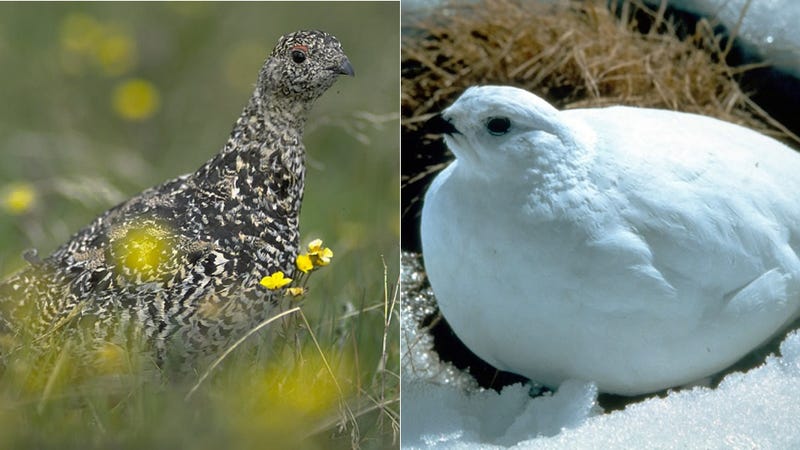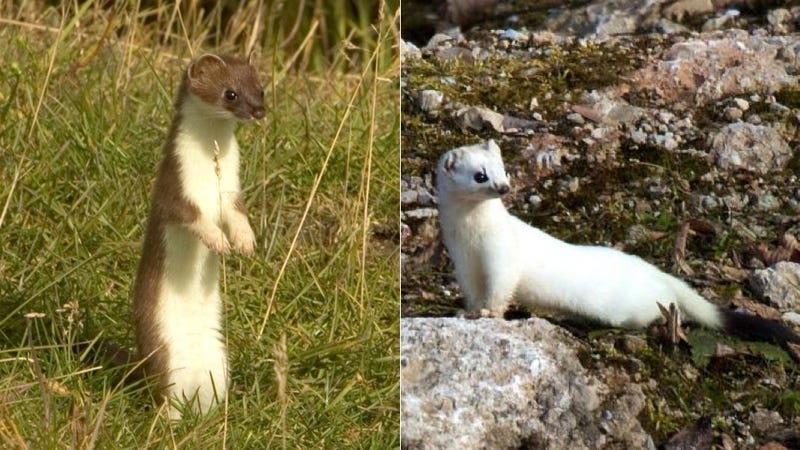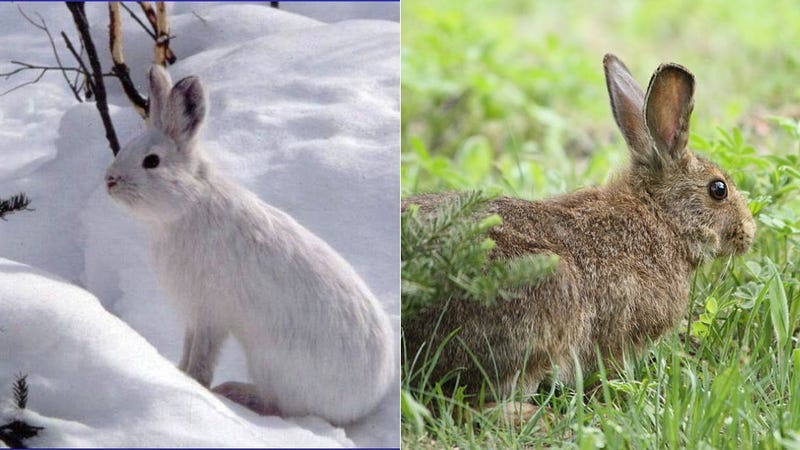Ptarmigans are a mottled brown throughout the Summer to blend in with their surroundings like this white-tailed ptarmigan. As the days become shorter during the Fall, the ptarmigan begins to molt its brown Summer feathers and grow thick, white plumage. The white feathers of the willow ptarmigan allow the bird to creep across the snow unnoticed by its predators.

Arctic Fox.
During the Summer, the arctic fox boasts a gray-black coat that allows it to stalk its prey unseen in the dense arctic underbrush. The arctic fox turns white in Winter to camouflage the carnivore from both prey and predator: the fox is a tasty meal for polar bears, wolverines, golden eagles, and snowy owls. It can use its bushier Winter tail to cover its face and shield it from icy arctic winds.

Stoat.
This weasel-like creature has a sleek brown coat in the Summer accented by a white chest and belly. In Winter, the stoat sheds its brown fur in favor of a warm white coat.

Snowshoe Hare.
While it gets its name from its large hind feet, the snowshoe hare is perhaps most distinguishable by the colorful transformation it undergoes from season to season. In the Fall, the brown fur that blends so well with its forested surroundings begins to turn white. By Winter, the only telltale signs of this bunny are the black tips of its ears and its dark eyes.

Roe Deer.
In Summer, the roe deer's coat is a vibrant golden-red. Though it doesn't turn white in Winter, the roe deer sheds its red Summer coat in favour of a dark brown one, which is much thicker to trap body heat.


No comments:
Post a Comment